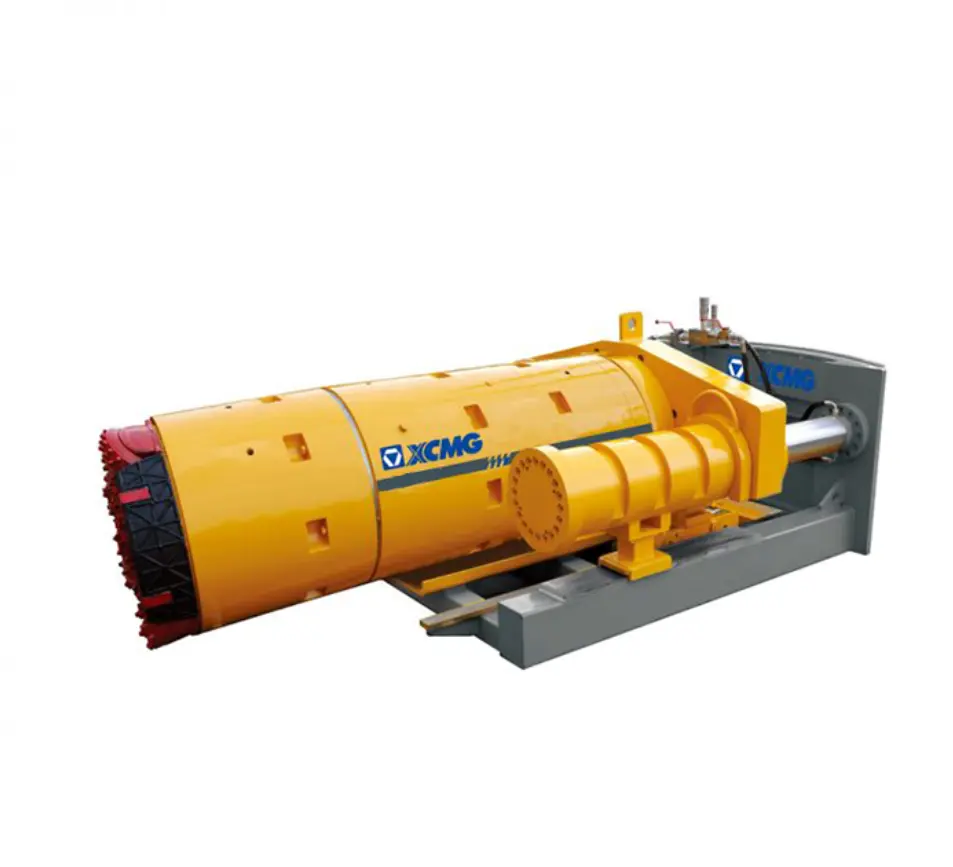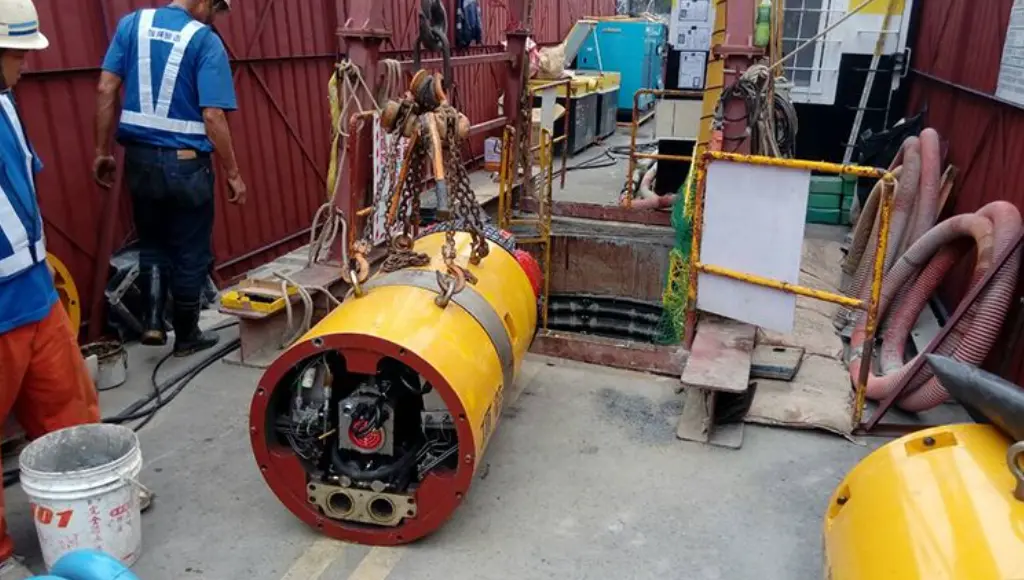What Factors Should You Consider When Choosing a Pipe Jacking Machine?
Exhibition Activities
2024/12/26
Choosing the size of pipe jacking equipment for your project is essential to guaranteeing effectiveness and achieving positive outcomes. Here are the important aspects to take into account:
Project Specifications and Requirements
When making decisions for your projects, requirements is important to keep in mind the needs at all times by looking into the scope and depth of the excavation work along with the soil conditions as they play a crucial role in determining the right machinery for the job. If you are dealing with rough terrain such as rocky areas, it might be essential to opt for a machine that comes equipped with strong cutting features like the XDN1000H, which provides high torque and cutting power suitable for tough conditions.

Budget Constraints and Cost Analysis
Financial limitations are a factor to consider when making your choice. It’s crucial to perform an assessment of expenses that covers more than just the upfront cost but also includes running costs, upkeep expenses, and possible losses due to downtime. Opt for a device from a trusted supplier like Machplaza for potential savings over time thanks to its reliability and effectiveness.
How Does the Diameter of Pipes Influence Machine Selection?
The size of the pipes plays a role in determining which pipe-jacking machine to use.
Matching Machine Size with Pipe Diameter
Selecting the machine that suits your pipe size is crucial to prevent inefficiencies or harm in possible instances. Machines vary in size to fit various pipe diameters. For instance, for projects involving bigger pipes, think about opting for options such as the XDN1200H, which is tailored for managing heavy loads due to its strong cutter head torque power.
Available Options for Different Diameters
There are plenty of choices designed for pipe sizes to consider when selecting machinery for various project needs; it’s best to talk to vendors who have a variety of machines available that can cater to your specific project requirements and preferences. Websites such as Machplaza offer a range of machinery options to help you find the perfect match for your project needs.

To sum up, the points discussed earlier on this topic, by assessing these aspects mentioned before you can effectively choose the right size of pipe jacking machine that suits your requirements best while enhancing both efficiency and cost-effectiveness in your construction projects.
Why Is Soil Condition Critical in Selecting a Pipe Jacking Machine?
Choosing the pipe jacking machine heavily relies on the soil conditions at hand since various soil types come with their hurdles that can greatly influence how well the equipment functions and its overall effectiveness in the field of work. For instance, sandy soils may call for machines equipped with custom cutting tools to prevent caving in, whereas clayey soils might require increased torque to handle resistance. Being aware of these obstacles is crucial when deciding which machine best suits the conditions of your project location.
Adapting Machines to Varying Soil Conditions
Modifying your pipe jacking equipment to suit soil conditions is key to keeping operations running smoothly and avoiding project setbacks. Machines with cutter heads and customizable torque settings are better equipped to tackle the various types of soil they may encounter. This flexibility enables performance over a range of terrains, whether facing soft or hard ground challenges. Seek advice from suppliers who specialize in machines designed for soil compositions; platforms like Machplaza can offer helpful recommendations and choices.
How Does Project Location Affect Your Choice?
Urban vs. Rural Project Considerations
The location where your project is situated plays a role in selecting the right size of pipe jacking machine to use. Urban areas usually present obstacles like space constraints, strict noise rules, and pre-existing underground facilities. In these scenarios, it’s best to opt for machines with accurate control features to reduce disturbances and comply with regulations.
On the other hand, situations in rural areas may permit the use of bigger equipment because of the increased space and fewer limitations. However, it’s important to take into account factors like transportation arrangements and availability of power sources when making decisions. Picking out the machinery from sites like Machplaza guarantees you access to a variety of machines that work well for both city and countryside tasks.
Considering factors, like the soil quality and where the project is located when selecting the pipe jacking machine for your construction requirements can help improve efficiency and guarantee the success of your project.
What Role Do Technical Specifications Play in Decision Making?
Choosing the correct pipe jacking machine relies heavily upon its specifications since they offer in-depth information regarding the machine’s abilities and constraints that can guide you in evaluating its compatibility with your project’s specific requirements.
Key Technical Features to Evaluate
When assessing the characteristics of the equipment in question, it is important to concentrate on critical elements like the torque of the cutting head, power output, and rotational speed. Take for example the XDN1000H and XDN1200H, which provide varying levels of torque and power, making them suitable for a range of project needs. By evaluating these attributes, you can ensure that the chosen machine is capable of addressing the obstacles presented by the soil conditions and pipe size specific to your project.
Moreover, takes into account technical aspects like how well the machine can adjust to various soil types and continue to operate efficiently in different environmental circumstances. Machines that offer settings offer more versatility and precision, improving productivity on a range of project locations.
Integrating these assessments into your decision-making process helps you make smarter choices when picking pipe-jacking equipment for your construction projects, effectively boosting their success and efficiency levels significantly. A platform such as Machplaza offers a range of information and solutions customized to cater to your project’s unique requirements.
How Can You Ensure Optimal Performance with the Right Machine Size?
Choosing the size for your pipe jacking machine is just one piece of the puzzle. The key to top-notch performance includes maintenance routines and following operational guidelines while making the most of the support services that are, at your disposal.
Maintenance and Operational Best Practices
It’s important to maintain your pipe jacking machine to keep it running smoothly and efficiently at all times. Make sure to set up a schedule for inspections and maintenance to deal with any wear and tear issues promptly. This involves inspecting the cutter head for any damage, determining that the hydraulic systems are working properly, and checking the responsiveness of all controls.
Following established guidelines is important, for maximizing efficiency well. When training your staff make sure they are well versed in operating the particular machine model like the XDN1000H and XDN1200H. Having a good understanding of the machine’s functions and features can help prevent mistakes and minimize operational issues.
Additionally, improving your approaches to accommodate different soil conditions and project settings can boost effectiveness in operations. The optimization of cutter head speeds and torque settings, by responding to machine feedback, can facilitate smoother navigation through difficult terrains.
Utilizing Machplaza’s After-Sales Support
Using after-sales support services can boost the longevity and efficiency of your pipe jacking machine a deal! Marketplaces such as Machplaza provide after-sales support options like online services for technical details accessibilities and purchasing spare parts through operation manuals on hand, as well as video assistance for application tips, troubleshooting, and maintenance advice to help you tackle any operational challenges that may come up.
Machplaza‘s worldwide customer support team provides help, for international projects as well. It guarantees that you can receive guidance and effective solutions no matter where you are situated. This helps reduce downtime and keeps productivity levels high.
By following these maintenance routines and making use of the support options at your disposal, in a manner, you can guarantee that the pipe jacking machine you have selected functions at its best throughout its lifespan of use.
What Are the Long-Term Implications of Selecting an Appropriate Machine Size?
Selecting the size for your pipe jacking equipment goes beyond just meeting current project requirements – it carries lasting consequences that impact different facets of your operations over time.
Impact on Project Timelines and Success Rates
Choosing the right size machine for your project can have an impact on its progress and success rate in general terms as well as in terms of timelines and outcomes achievement possibilities. If the machine chosen is too small for the task at hand, it could cause inefficiencies leading to delays and increased expenses due to operating times, which may eventually lead to higher costs. On the other hand, when opting for an oversized machine, could result in unnecessary costs without offering any additional advantages or benefits. Selecting a machine that perfectly fits your project’s needs, like those offered by Machplaza, is crucial in ensuring operations that adhere to planned schedules and reduce the chances of unexpected challenges or setbacks from occurring.
Future Scalability and Versatility
Having a pipe jacking machine of this size has benefits when it comes to being ready for future growth and changes in project needs over time. Having a machine that can adjust to requirements as projects progress is highly valuable. For example, the XDN1000H and XDN1200H are built with adaptability in focus. This enables making changes, in cutter head settings to fit pipe sizes or ground conditions.
This flexibility doesn’t just cater to your project requirements but also sets up your operations for upcoming expansion prospects effectively. Being able to manage projects efficiently using just one piece of equipment reduces the need for additional machinery investment and maximizes the utilization of your current assets.
By considering these long-term implications when selecting a pipe jacking machine, you can optimize both immediate performance and future operational capabilities, ensuring sustained success in your construction endeavors.
